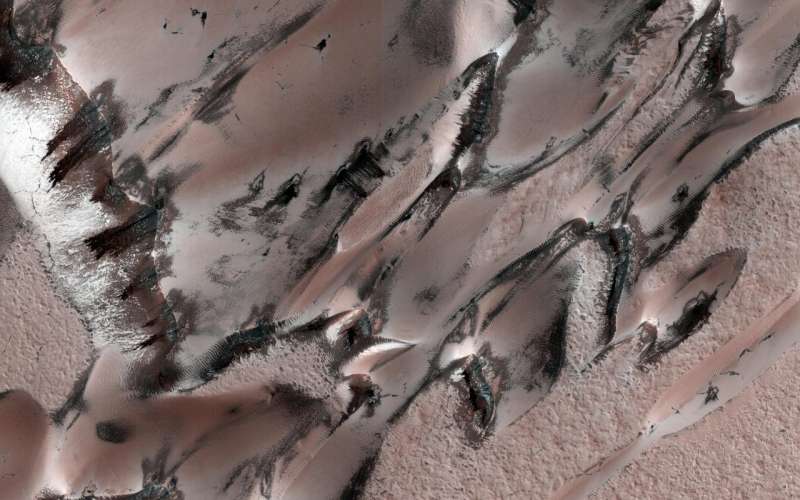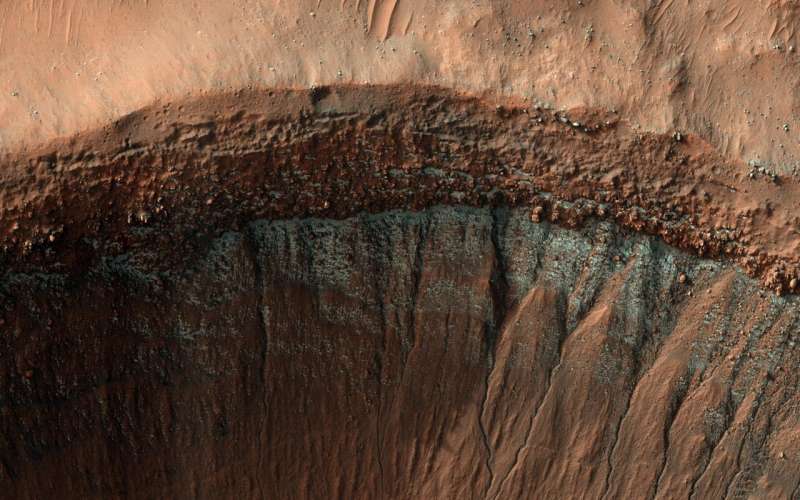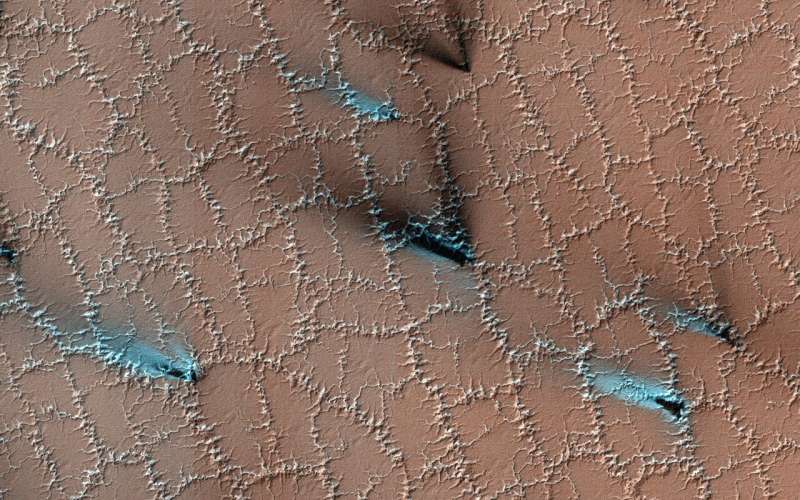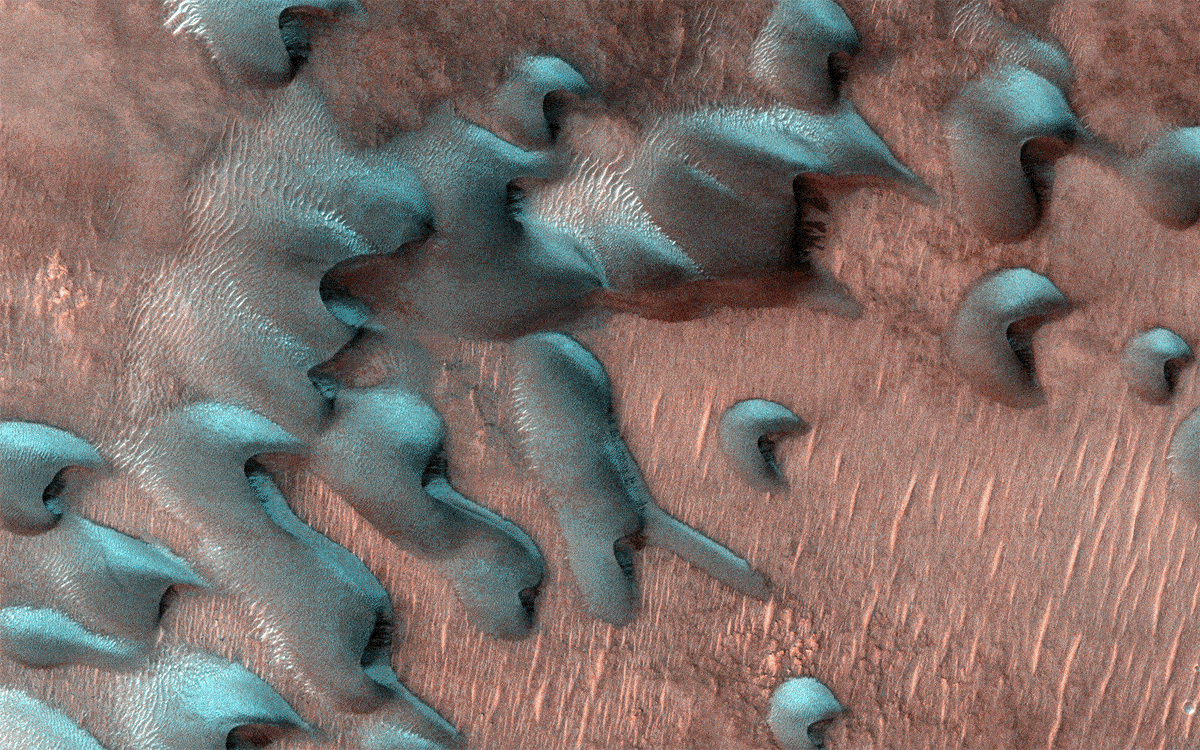Joanna Weiss
Sun, October 6, 2024
Nearly three years into her marriage, Emily Berning suspected there was some reason why she wasn’t getting pregnant. A few highly unpleasant tests at a fertility clinic gave her the answer: Her fallopian tubes were blocked. It was a cruel irony for a onetime college anti-abortion activist who now runs an anti-abortion charity out of her Florida home.
“I really was sad about the idea of not being able to experience pregnancy,” she says. “Especially since we work with so many pregnant women — I think it’s absolutely beautiful.” But Berning didn’t want a risky surgery to unblock her tubes. And she felt uneasy about in vitro fertilization, or IVF. She firmly believes that life begins at conception, and she didn’t feel right about creating embryos that might later be destroyed.
One day, her mother-in-law, listening to a Focus on the Family radio show, discovered a path to parenthood that Berning had never imagined. An adoption agency called Nightlight Christian Adoptions had a program called Snowflakes, which specialized in donations of embryos left over from IVF. Berning could take possession of an embryo from another couple’s fertility procedure, implant it in her uterus, and give birth to the baby herself.
In some circles, these children are known as “snowflake babies,” a term Nightlight coined in reference to the way IVF embryos are stored, in subzero temperatures. They represent a small sliver of the assisted-reproduction landscape, their births largely facilitated by faith-based agencies.
And for two decades, they’ve been political symbols, used to bolster arguments about the beginning of life. In 2005, then-President George W. Bush invited 21 “snowflake babies” to the White House to underscore his opposition to stem cell research that destroyed embryos in the process of studying diseases. In 2022, the first-ever “snowflake baby” filed an Amicus brief in the Dobbs case that brought about the end of Roe v. Wade, arguing that her very existence proves that life starts at fertilization.
But now, people on both sides of the abortion wars are embracing embryo donation — not as a weapon, but as a uniting force. The practice has long been embraced by Christian families who might otherwise have qualms about IVF, because it can be seen as a solution to the most troubling part of the process: the disposal of frozen embryos. Lately, though, some advocates have been trying to spread the word about embryo donation beyond religious communities. Removing the Christian wrapping, these advocates say, would attract nontraditional families, raise hopes for would-be parents and promote an option that’s vastly more affordable than IVF.
It all points to embryo donation as one answer to a complicated moral and political calculus.
“Most people don’t know that embryo donation exists, either as a donor or a recipient. They’re just not aware. And most people will say, ‘I wish I knew about this sooner,’” says Deb Roberts, a single mother and abortion-rights supporter who gave birth to two children from donated embryos — and went on to found a non-faith-based embryo-donation agency.
I spoke this year to Berning, Roberts and other parents from across the political spectrum who have given or received IVF embryos. Their urgency to promote this practice has grown since the Dobbs decision, which encouraged some anti-abortion activists to set their sights on IVF. Last summer, the Southern Baptist Convention, the nation’s second-largest Christian denomination, passed a resolution opposing IVF. Politicians have stepped in, prompting the usual partisan squabbles: In the U.S. Senate, Republicans recently blocked a Democratic bill to protect IVF, calling it a political stunt, while Democrats accused them of putting fertility treatments in jeopardy.
But many embryo donation advocates are thinking beyond politics and are focused on the practical. What IVF represents, above all, is a path to parenthood — and in that deeply held, bipartisan desire, there’s ample room for common ground. “We do believe that these embryos are little lives that are just waiting for a chance to be born,” says Beth Button, executive director of Snowflakes. But “quite honestly, this is an option that anyone can consider — regardless of where they believe, on the spectrum, life begins.”
The vast reserve of frozen embryos in the U.S. — some estimate there are as many as 1.6 million — is an unintended consequence of IVF, a once-revolutionary, now-commonplace procedure pioneered in the 1970s. It begins when doctors surgically remove an egg from a fertility patient's body, fertilize it with sperm in a petri dish, and allow it to divide and grow. After five or six days, when it has divided into 100 to 200 cells and is technically known as a blastocyst, the embryo is transferred into a uterus, where it may or may not develop into a pregnancy.
The process is inexact enough, and costly enough, that fertility patients regularly create more embryos than they’re likely to use, leaving them with extras, sometimes dozens of them, along with a challenging set of options. They can dispose of the embryos. They can donate them to medical research. Or they can store them in canisters of liquid nitrogen at -321 degrees Fahrenheit, for months or years or even decades, at a cost of $500 to $1,000 per year.
The status of those embryos, in cryogenic limbo, has vexed some religious conservatives for decades. Louisiana has a law preventing the destruction of embryos, forcing fertility clinics to store their embryos out of state. Within the Catholic Church — which officially forbids IVF — ethicists have debated whether it’s in an embryo’s best interest to stay frozen forever, and questioned whether destroying an embryo is equivalent to taking an adult off life support.
But many religious couples have used IVF to build their families; Button notes that, despite any edicts from Rome, there are plenty of Catholics among her Snowflakes donors and recipients. Indeed, the concept of “embryo adoption” began in the 1980s with a deeply religious couple that had gone through unsuccessful fertility treatments. They asked their clinic if they could use another family’s embryos, but they wanted to know the family’s medical history, which health care privacy laws didn’t allow. And, more pointedly, they wanted to treat the embryos as lives, ready to be placed in a new home.
So they approached the director of Nightlight Christian Adoptions, who happened to be a friend. The agency helped create an agreement that would embed a property transfer — because, in every state, embryos are technically property — into a process that looked and sounded like adoption.
To do that, Snowflakes developed a detailed matching process to link donors and recipients. Families create presentations about themselves. They list their preferences for a matching family’s race, religion and marital status, and cite the level of communication they’d want after a baby is born (many choose ongoing relationships, sharing photos and videos and even planning visits). Donors submit blood work and provide a medical history. Recipients submit to a home study.
“We’re vetting families,” Button explains, “and this is giving peace of mind to the families placing embryos with us.”
On its website, the American Society for Reproductive Medicine says that using adoption terminology to describe embryo donation is “inaccurate and misleading.” But many self-described “snowflake families” say the adoption framework is what drew them to the program and helped them work through the complex emotions involved.
After Sterling and Eileen Osborn, a couple in Connecticut, gave birth to two boys through IVF, they were stunned to learn that they had five extra embryos and a wrenching new set of decisions to make. Destroying the embryos “was not an option for us,” says Eileen, a former music teacher. “To me, it’s still a potential life, and I would want to give any child a chance to live.” Still, it was hard to get their heads around the implications of embryo donation. Could they bring themselves to part with their genetic material? Did they have the moral right to choose who would parent their embryos? What if, later in life, their sons accidentally met their biological siblings?
“It’s an absolute emotional rollercoaster,” Sterling told me. “It’s as much of emotional rollercoaster as going through the initial process of IVF.” The Osborns wound up donating their embryos, through Snowflakes, to a couple in California. Months later, they got a notification that the couple had given birth to twins: a boy and a girl. “They’re people,” Eileen told me, describing how the news hit her. “They’re into this world now, there are pictures, and this is definitely real.”
Berning, 29, loved the idea of imagining embryos grown into people. She and her husband founded a nonprofit called Let Them Live, which offers pregnant women money for food, rent and other bills, along with financial counseling, if they’ll pledge not to have abortions. Her extended family has experience with traditional adoption; Snowflakes seemed an extension of that idea.
“It didn’t make sense for us to create our own embryos when there are other embryos existing,” she says. “My husband and I are just huge advocates of life at every stage.”
When I asked her about the Southern Baptists’ resolution opposing IVF, Berning told me she’d thought hard about it and decided that she agrees. “The dignity for human beings trumps anyone’s desire to have a family, and that includes us,” she told me. “If there were no embryos to adopt, then that would be that.”
That’s why, amid the donation process, she’s struggled to square her desire to be a parent with the clinical realities of fertility medicine. “The casual language of ‘Oh, we can just discard them,’ or ‘Oh, your tissue transfer,’” she says. She hates the terminology around judging embryos’ viability, “where these ones are ‘low grade.’ I would never refer to a human being as ‘low grade’ and destined for destruction.”
Berning heard it all last year, after she acquired a set of 15 embryos and prepared for the implantation process. The embryos had been frozen in 1995, which meant that they were technically as old as she was. Thirteen stopped growing as soon as they were thawed. The remaining two were implanted.
Berning sent me a picture of herself, beaming as she holds up a picture of the embryos. But when she took a pregnancy test two weeks later, she learned the embryos hadn’t successfully implanted. She posted a video of herself on TikTok, sobbing when she got the news. They were going to have to try again.
It took Roberts multiple tries, too, before she was able to get pregnant via a donated embryo. A Colorado marketing executive who is single and Jewish, Roberts had gone through many unsuccessful IVF attempts by the time she was in her 40s. Calculating her age and the cost of the procedures, she realized that embryo donation might be her last, best chance at motherhood. But she found that fertility clinics lacked the time or expertise to match families, vet the embryos or manage the transfer process. She tried some faith-based embryo donation agencies; one turned her away because she wasn’t married and one told her she’d face a three-year wait. (Button says Snowflakes warns single parents and LGBTQ+ couples that they might have to wait to find a willing donor.)
So Roberts reached out to friends and acquaintances, posted a call for embryos on Facebook and got multiple offers of embryos to spare. She found lawyers to help navigate a combination of property law — accounting for the fact that human tissue can’t legally be bought or sold — and family law that would give her full custody of any children who resulted. She handled the logistics, at one point carting a canister of frozen embryos from one clinic to another in the front seat of her car, strapped into the seat belt.
She wound up giving birth to a son, and two years later, a daughter, from the same batch of embryos — “full biosiblings,” she calls them. Then she started her own agency, Embryo Connections, and set up a process that’s in many ways similar to Snowflakes’: questionnaires for placing families and “intended parents,” medical tests to track donors’ genetic history, evaluations to make sure only the most viable embryos are donated.
One difference is that Roberts doesn’t use the term “adoption.” (The process also doesn’t involve adoption law, she notes, so there are no legal provisions for typical adoption practices like visitation.) Still, she applied for a grant from a U.S. Department of Health and Human Services program called “Embryo Adoption Awareness and Services,” created by Congress in 2002 amid debates over stem cell research. The $1 million annual appropriation has traditionally gone to faith-based groups. But this year, Roberts’ agency is one of three secular recipients. The other two, Embryo Solution and Empower, are also led by battle-scarred veterans of IVF.
Collectively, their goal is to change embryo donation from a niche practice — of the roughly 133,000 embryos transferred through IVF in 2021, 2.4 percent had been donated, according to the CDC — to a widespread option. So far, their clients range from heterosexual married couples to gay men using surrogates, older single women whose own eggs aren’t viable, and couples who considered a sperm or egg donor but prefer “genetic equity”: each parent contributing equally, or not at all, to the genetic makeup of their child. Donation could also appeal to prospective parents who would consider traditional adoption but balk at the expense and the long waiting time, Roberts says.
Alena Wright, a neuroscience researcher in Wisconsin who runs Embryo Solution, says donation would help middle-class families who can’t easily spend tens of thousands of dollars on fertility procedures: Acquiring donated embryos costs around $10,000, compared with $20,000-$30,000 for a typical IVF cycle. “Research shows that only 25 percent of the U.S. population can afford IVF. Seventy-five percent cannot afford it,” Wright told me. “That’s shocking. That’s what motivates me. We’re not talking about a small marginalized group that’s underserved.”
For donors, the incentive is emotion, Roberts says. After going through a physically and emotionally torturous IVF process and emerging with a happy ending, many parents want to pay the gift forward. And they’re more likely to want to donate their embryos, she says, if they’ve put them through genetic testing that reveals their gender. “They feel like they’re more connected. Once you know the sex, it feels more like a person,” she says.
Still, she’s deliberate about her language. An embryo, she says, represents just one of many steps in a tenuous physical journey to life. The American Society of Reproductive Medicine notes that in natural reproduction, 70 percent of fertilized embryos don’t result in live births. Roberts knows, from her own long and painful experience, that many IVF embryos fail to grow, as well.
“They’re potential,” she says. “It’s not a question of ‘life begins at a certain point.’ It’s just that they have the potential to be children.”
That’s why she was dismayed at an Alabama Supreme Court ruling last February that equated embryos with children. “Do they really understand what an embryo is and what its success rates are in general, from fertilization to an actual positive pregnancy test and an actual first ultrasound? How many embryos are lost in that process?” Roberts says. “It seems to me that they really don’t understand IVF.”
The case, LePage v. Center for Reproductive Medicine, centered on a fertility clinic in Mobile where a patient wandered into a “cryogenic nursery,” opened a tank where IVF embryos were stored and picked up some containers. Shocked by pain from the cold, he dropped the containers on the floor, destroying the embryos in the process. Three patients sued the clinic under an 1872 Alabama law called the Wrongful Death of a Minor Act.
The state Supreme Court, overturning a trial court ruling, declared that the law “applies to all unborn children, regardless of their location.” Alabama fertility clinics immediately stopped operations, fearing liability, not just for accidents, but for the IVF process itself. Fertility doctors across the country fretted that their work could be in jeopardy.
Would-be embryo donors and recipients also panicked. Button says Snowflakes donors called to ask if their embryos would have to stay frozen forever. Wright says potential donors who had been on the fence signed up to start the process before it disappeared. Maya Grobel, who co-founded the agency Empower, heard from clients who wondered if they should ship their embryos to a “safe state.”
Republicans, in Alabama and across the country, quickly scrambled to proclaim their support for IVF. Within weeks, the Alabama Legislature had passed a law protecting fertility clinics from liability, though it didn’t address the thorny issue of the start of life. Every Republican U.S. senator signed a statement supporting access to the procedure, and Republican Sens. Katie Britt and Ted Cruz filed a bill last spring that would cut off Medicaid funding for states that ban IVF. Former President Donald Trump recently called himself a “leader on fertilization, IVF” and said he wants to make the process free.
But Trump’s stance has angered some anti-abortion conservatives. And those intra-party divisions are the consequence of a policy path that started 50 years ago with efforts to overturn Roe v. Wade, says Sean Tipton, director of policy and advocacy at the American Society for Reproductive Medicine.
“It’s a dilemma when you have hung your ideological hat on ‘the fertilized egg is a child’ and then people become aware of fertilized eggs in a freezer,” Tipton says. “Instead of saying ‘the fertilized egg is a baby,’ they now have to say, ‘the fertilized egg is a baby, but we love IVF’ … Because they can read opinion polls. They know everybody loves their grandchildren.”
Opinion polls indeed show broad support for IVF, including among Republicans; a Pew poll last May found that 70 percent of Americans, across religious and political lines, think access to IVF is “a good thing.”
But some embryo donation advocates, both religious and secular, agree that there might be ways to curb the number of new embryos that enter into storage every year. One anti-abortion lawyer described the fertility industry to me as the “wild, wild west of unregulation.” Wright notes that the U.S. doesn’t limit the number of embryos that can be created in any given cycle, as some other countries do. And both doctors and patients have incentives to create a large surplus of embryos — due to the cost, the physical stress of retrieving eggs and the high chance that a fertilized egg won’t make it through the process.
“There’s nothing to stop an embryologist from creating 30 embryos for a family in their 40s that only wants one kid,” Button says. “This is what we’re dealing with now, and embryo adoption is a great solution.” She says some donor families have told her that “if we had known about embryo adoption, we wouldn’t have done IVF. We would have come straight to Snowflakes.”
Roberts says she hears the same sentiment from some secular families: “Whether they’re religious or not, we get people who say, ‘There are so many embryos out there. Why would I create more?”
Roberts is surprised that, amid the current hand-wringing over IVF, more people aren’t talking about embryo donation. “I’ve been shocked at all the news coverage about ‘Can we destroy embryos?’ ‘What is the legal right for embryos?’ And nobody’s saying, ‘Well, what are the options?’” she says. “It’s weird that the conversations stop at ‘When does life begin?’ but not ‘What do we do in these situations on either side?’”
But those conversations are happening, at least in some meeting rooms and living rooms. Button pointed me toward a little-noticed line in the Southern Baptists’ anti-IVF resolution: Parents who are struggling with infertility should “consider adopting frozen embryos” instead.
And Berning, still working with Snowflakes, has acquired a new set of 10 embryos — frozen in 2006 — so she can start the process again. She’s getting ready for a transfer in January. “I’m hoping,” she told me, “this round will end up with having a beautiful baby.”








